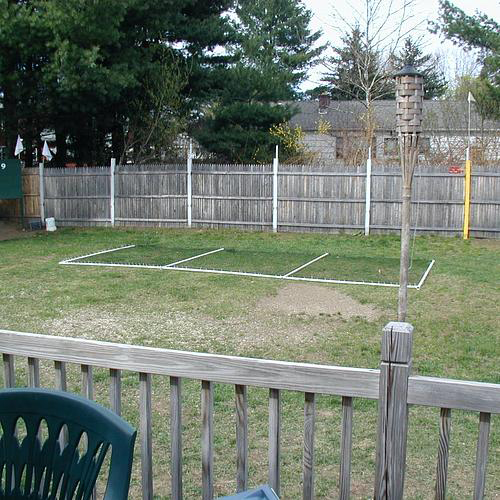Mesh monster

Summer, early 2000s. A backyard in suburban nowhere, a hand-operated electronic scoreboard stuck at 3 balls, 2 strikes, 2 outs.
And we had a problem. Our last ball had just disappeared on a foul over the right-field fence.
Every so often a wiffle ball cleared my friend's fence and vanished into the neighbor's yard. We'd watch it rise, hang in the air for a beat, and drift out of reach.
Gone.
The neighbor kept all of them. Never returned a single one. I still don't know if he disliked noise or just kids, but our stash kept shrinking.
This wasn't the Amazon era. We had to drive around to whatever sporting-goods store still existed, hope they had stock, and pool money from part-time jobs that paid $6.75 an hour. Each lost ball hurt.
We tried asking nicely. That failed spectacularly. Think Disney villain energy.
We tried sneaking through the backside of his yard. Thick brush. Even our skinniest friend couldn't get through without coming back scratched and empty-handed.
We couldn't raise the fence permanently. My friend's parents were already generous enough letting us turn their lawn into a weekly outfield.
So we built the Mesh Monster.
A homemade wall of PVC and netting that lifted on game days and folded away the rest of the week. Thirty dollars in materials. Two hours of tinkering. Zero lost balls after that.
The Mesh Monster was born from being stuck.
Sometimes constraints aren't obstacles, they're blueprints.